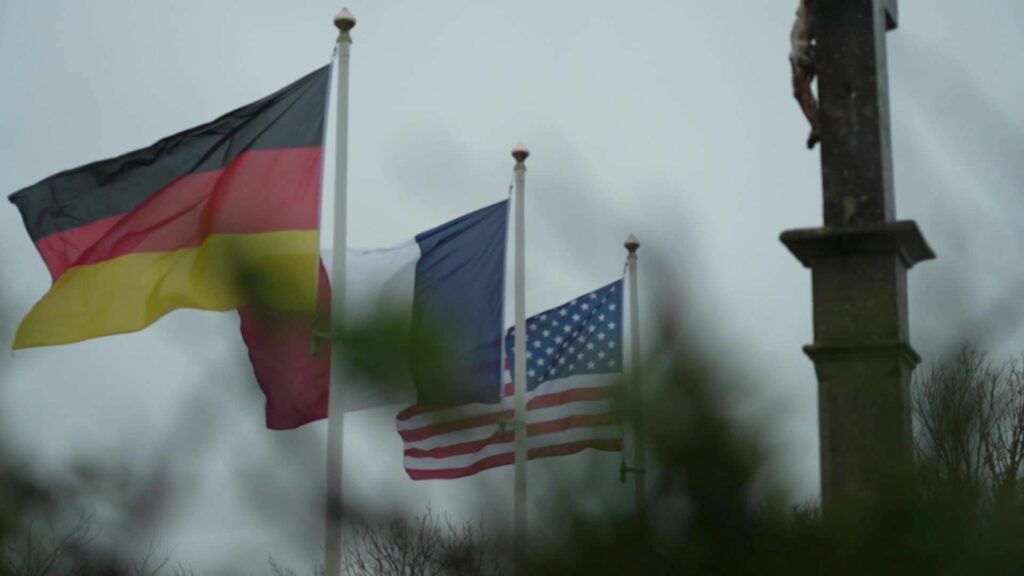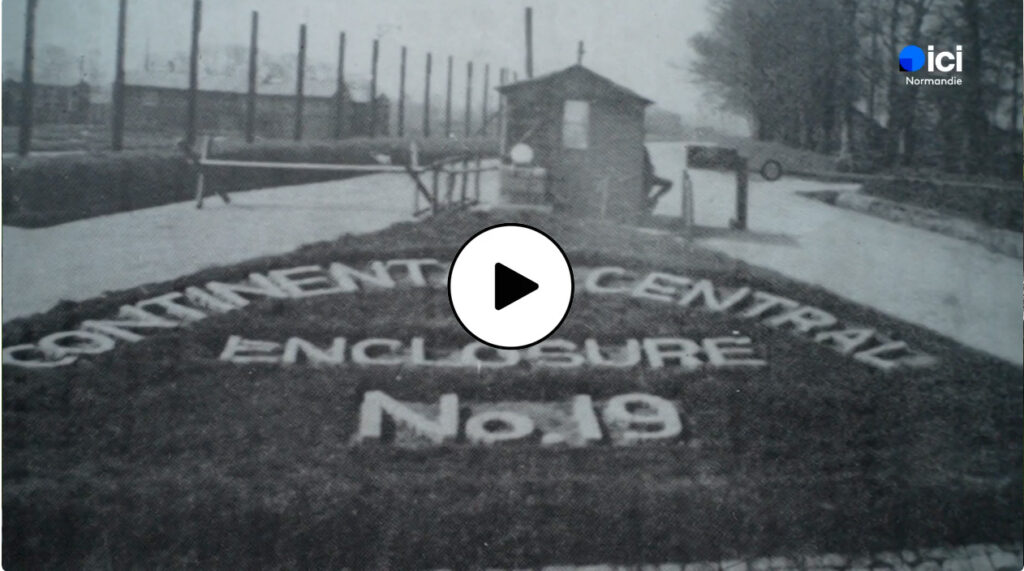Article published on the France 3 Région and France Info websites – 08/05/2025.
May 8, 1945 marked the end of the Second World War, but not yet the return home of the 3.8 million German prisoners, some of whom had been captured since June 1944. At the Foucarville camp in Manche, which housed up to 100,000 German soldiers, the last of them left in February 1946. A look back at this mass captivity, forgotten by history, and soon to be presented in a museum.

For a long time, the war was only told from the point of view of the victors.
In the windows of museums dedicated to the Second World War, the eternal absentee is the German prisoner. And yet, millions of them were incarcerated in camps run by the Americans, the British or the French.
One of the largest camps in Europe was established at Foucarville in the Manche department, today the commune of Sainte-Mère-Église, a few kilometers from Utah Beach, just after D-Day. But who remembers?
The Warren J. Kennedy Association has set itself the task of building a museum in tribute to these prisoners, the first dedicated to wartime captivity in liberated Europe. The museum will be located in the commune of Ravenoville, a few meters from one of the former entrances to the Foucarville camp.
Foucarville: one of the largest German prison camps in Europe
As soon as the Allies landed on June 6, 1944, they had to deal with prisoners. The first captives were parked on the beaches, then sent to transit camps, before being sent to Great Britain.
But this system, which the Allies had anticipated in advance, was soon outdated. Great Britain quickly became saturated with prisoners. Camps were set up on French soil. And in December 1944, the Foucarville transit camp became Continental Central Enclosure n°19. For over a year, this camp, under American command, was to receive up to 10,000 prisoners, sometimes in the same day, captured hundreds of kilometers away, as the front advanced.
With each new arrival, the camp grew, nibbling away at the farmers’ land, until it reached a surface area of 100 hectares. And Jean Quétier, treasurer of the Warren J. Kennedy Association and former mayor of Ste-Mère-Église, likes to recall that at the time, Foucarville was “the largest commune in La Manche” in terms of population.
In this camp, churches, a theater, bakeries and even a train to deliver food to each enclosure were built, as recounted by two locals in a book: “Prisonniers allemands en Normandie – un camp américain – Foucarville – 1944-1947” written by Anne Broilliard and Benoît Lenoël and published in 2017 by Editions OREP.

See the France 3 video and the rest of the article on the France3 Région/France Info website.
A denazification program to avoid repeating the failure of the First World War
Among the German prisoners, many young soldiers passed through the Foucarville camp. A total of 17,000 under the age of 18! Some as young as 12. And for the Allies, it was important to re-educate these Nazi-raised forces before sending them home.
Article written by Karine Lepainteur
